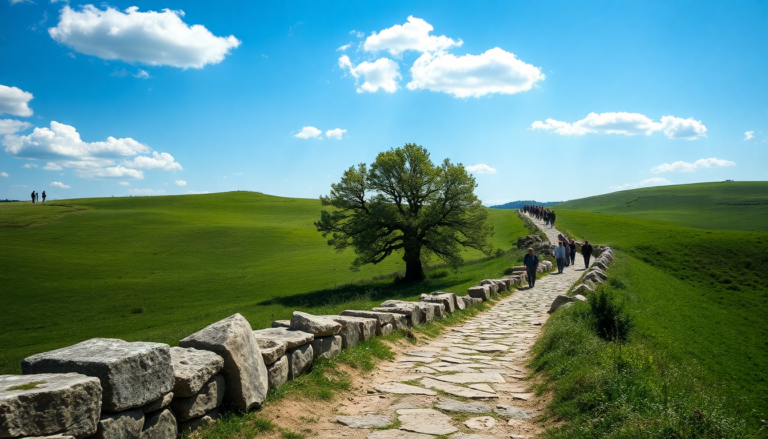Argomenti trattati
Imagine walking along a path that has witnessed centuries of history—where every step echoes with the stories of travelers from ages past. The Via Francigena, an ancient pilgrimage route stretching from Canterbury to Rome, now stands on the brink of a remarkable transformation. As of May 17, 2025, during the 4th Festival of Regions in Venice, a pivotal agreement was signed between the Italian Ministry of Culture and seven regions traversed by this famed route, marking a significant stride towards securing UNESCO World Heritage status.
Understanding the significance of the agreement
This agreement reflects a shared commitment to elevate the Via Francigena’s profile, highlighting not only its historical importance but also its role in promoting a more sustainable form of tourism. The regions involved—Valle d’Aosta, Piemonte, Lombardia, Liguria, Emilia-Romagna, Toscana, and Lazio—are now united in their efforts to showcase the cultural and environmental values this path embodies. I remember when I first stumbled upon the Via Francigena; it was like stepping into a living museum, where every village and landscape told a story. It’s this very essence that the agreement aims to preserve and promote.
What does UNESCO status mean for the Via Francigena?
Achieving UNESCO recognition would not merely be a badge of honor; it could dramatically amplify the region’s appeal to tourists, encouraging responsible travel while providing economic benefits to local communities. By supporting the candidacy of the Via Francigena, stakeholders are not just aiming for recognition but are also fostering an environment that cherishes and nurtures local traditions, gastronomy, and the natural landscape. It’s truly about creating a model of tourism that allows travelers to connect deeply with the regions they explore.
Building a sustainable future through heritage
The cultural significance of the Via Francigena cannot be overstated. It represents a narrative of cooperation among diverse peoples and cultures, a dialogue that transcends borders. Minister Alessandro Giuli emphasized during the signing ceremony that this candidacy is more than just historical acknowledgment; it symbolizes a pathway for cultural collaboration across Europe. The potential for sustainable development along the route offers a unique opportunity for smaller communities to thrive, adapting and growing in harmony with their environment.
Steps towards official recognition
Moving forward, the process involves crafting a detailed technical and scientific dossier that showcases the uniqueness and universal value of the Via Francigena. This documentation will include original landscape assessments and insights into the historical significance of the route. Interestingly, the Ministry of Culture has allocated 1.1 million euros for this initiative, with funds designated for the Tuscany region to facilitate the dossier’s creation. It’s a substantial investment in a project that could redefine how we view and engage with our shared cultural heritage.
The broader impact on tourism
Once recognized, the Via Francigena could serve as a blueprint for promoting slow tourism—where the journey is as enriching as the destination. Imagine wandering through quaint medieval towns, tasting local delicacies, and engaging with the traditions that have been preserved through generations. It’s not just a hike; it’s an immersive experience that nurtures respect for the land and its people. I can recall a moment on my travels when I shared a meal with local artisans, learning about their crafts; it was a connection that left a lasting impression.
As many know, cultural heritage is not just about preserving the past; it’s about enriching our present and future. The Via Francigena embodies this philosophy, serving as a bridge linking different cultures, histories, and perspectives. The commitment from the involved regions signifies a collective understanding of the importance of this heritage and its potential to foster an inclusive and sustainable tourism model. Each footstep on this ancient path is a testament to the shared values of respect, understanding, and appreciation for our diverse legacies.
Conclusion: the journey ahead
The road to UNESCO recognition may still have its challenges, but the strides taken thus far highlight a strong unity between institutions and local communities in promoting a shared cultural heritage. As we anticipate the outcome of this candidacy, one can’t help but feel a sense of excitement for what lies ahead. The Via Francigena is not just a path through Italy; it’s a journey through time, a celebration of our collective history, and an invitation to explore the beauty of a slower, more meaningful way of travel.

